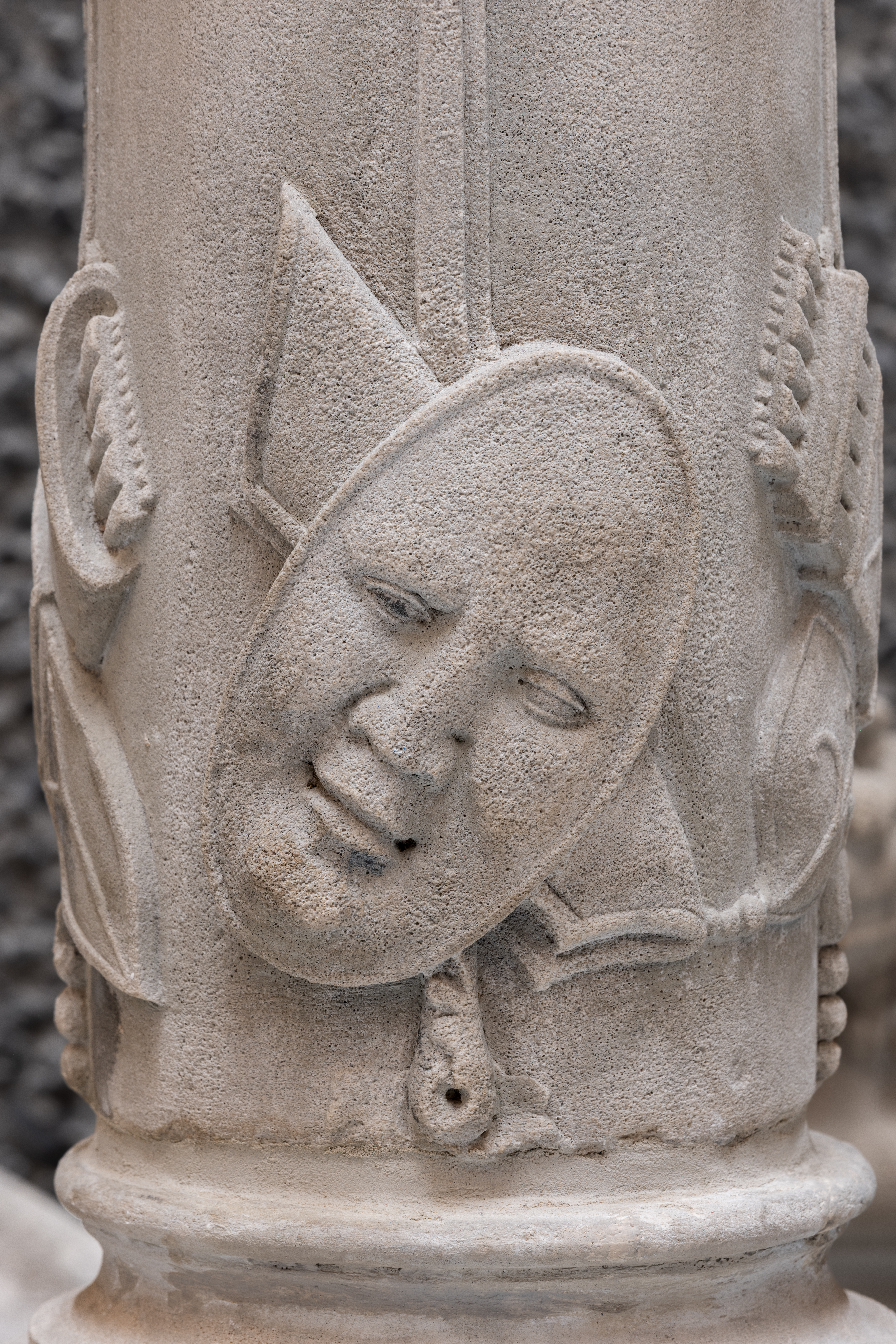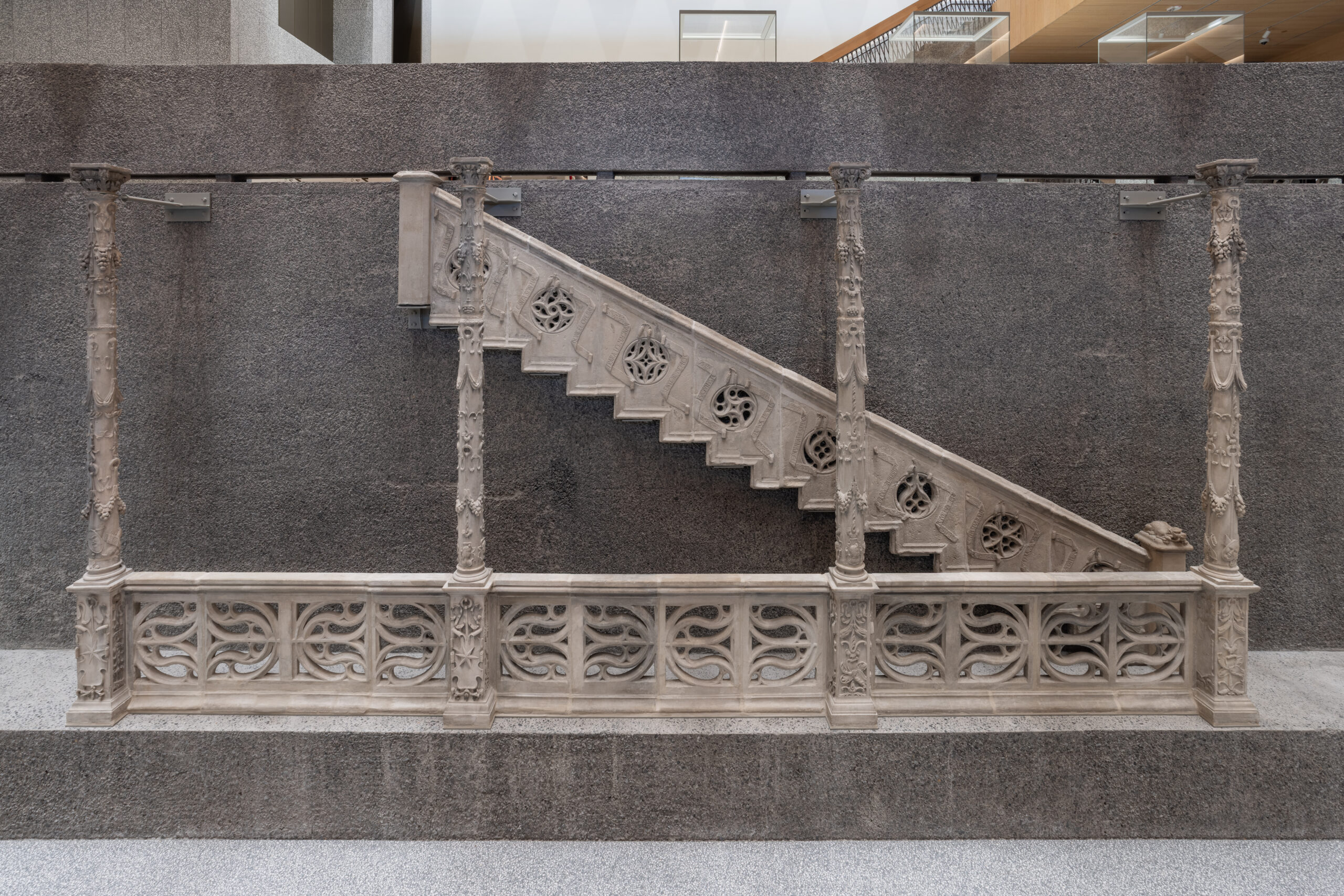The Princeton University Art Museum is reopening to much fanfare, with its beloved Mallorcan stone carvings in the spotlight.

Ten tons of elaborate stonework, salvaged from centuries-old mansions in Mallorca, have been dramatically implanted into a lobby wall at the new Princeton University Art Museum (opening October 31). The creamy architectural elements, with columns studding a balustrade and petaled filigree sliced into a staircase railing, arrived at the university decades ago. But only recently have scholars traced their strange path to New Jersey.
Alexandra Letvin, the museum’s associate curator of European art, says the fragments had long been “beloved, but not very well known.” She was hired in 2022, when the new building was under construction and the Mallorcan carvings had been dismantled to undergo cleaning and conservation (the Maryland office of Ever Greene Architectural Arts handled the project). Long nicknamed the Spanish Stairs, they had served as pedestrian routes in the museum’s Medieval Gallery, and they were said to have come from one sixteenth-century building in Mallorca—the date 1549 is carved into a column base.

Letvin, however, recalls that their varied stylistic traits immediately made her wonder, “Are we sure it’s all from the same place?” The stair railing has muscular Gothic quatrefoils, zigzagging ribbons with religious inscriptions, and a newel post capped with an emaciated fanged beast, while the columns and balustrade are draped in delicate neoclassical volutes, swags, and fruit. The contrast suggests that the two sections were made decades apart and not tailored for one client.
They had arrived at Princeton University in 1955 as donations from the Belgian-Dutch Baroness Marij Vincentia Cassel van Doorn, who had installed them in the palatial home in northern New Jersey that she shared with her husband, Baron Jean Germain Léon Cassel van Doorn. Scarcely any provenance papers came to Princeton with the gift, so Letvin’s team dug into archives internationally and traveled to Mallorca to uncover more of the stones’ backstory.

Their detective work shows that the staircase was made in the fifteenth or sixteenth century for an as-yet unidentified structure in Mallorca, and the balustrade and columns came from a sixteenth-century building (which is still extant) and were removed during a nineteenth-century remodel. By the 1920s, the stones had been cobbled together into one marketable pastiche by Arthur Byne and Mildred Stapley Byne, an American couple based in Madrid. They were scholar-dealers, lauded in their time for drawing attention to underappreciated Spanish artworks, objects, and buildings. But they are controversial today, since they brought material to market from owners under duress due to Spain’s volatile government and economy. One of the couple’s most gluttonous American customers was William Randolph Hearst, who was incorporating chunks of European buildings into his homes around the US.
But soon after the Mallorcan stonework was shipped to Hearst’s Bronx warehouse, he fell on hard times. In the 1940s the Cassel van Doorns, who had lost their own vast collections of art and antiques upon fleeing Nazi-occupied Europe, bought the pastiche at a Hearst fire sale, along with a massive fifteenth-century stone
window from southeastern France, carved with hearts and pointed arches. The baroness gave Hearst’s French window to Princeton, along with the Mallorcan stones.
For the new museum’s lobby, they have been rechristened the Mallorcan Stairway and Gallery Elements (the French window has been installed in a nearby corridor). The inscription along the staircase railing is now hard to decipher but has been loosely translated as a prayer for the Lord’s mercy, and there are a few inscrutably effaced inscriptions on the column bases. But some crisp details on these well-traveled stones—the date 1549, for instance, and the skeletal ribcage on the newel post’s fanged creature—practically seem freshly carved.

